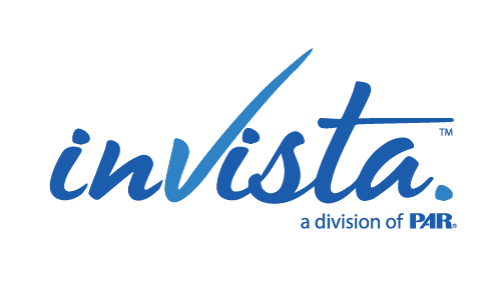Paid time off (PTO) is a crucial element for employee well-being. But millions of Americans let their PTO expire without taking that time—and those unused vacation days can have a major effect on your organization and employees.
Burned out and exhausted workers are more prone to health issues, lower creativity levels, and increased turnover rates. According to an Ernst & Young study, employees’ year-end performance rose 8% for every 10 hours of vacation time they took. What, then, is preventing workers from using their rightfully needed downtime?
Many employees cite fear of work overload upon return, poor communication regarding PTO policies, or a corporate culture that subtly discourages taking time off as reasons for leaving their hard-won PTO on the table.
Here is some advice that can help your organization encourage staff members to take advantage of their time off and help everyone see it as a way to help your company to flourish.
Why Does Paid Time Off Matter?
It is time to shift our perspective and look at PTO as a means to improve work efficiency within your organization.
Reimagine vacation time as a way for employees to press a reset button for their mind and body. In this context, time off isn’t a luxury or an added perk, it’s a smart investment in your most valuable asset— your employees.
But why is it so vital to encourage vacations? Here’s why getting employees to use their PTO benefits everyone:
- Better mood and less stress: Employees feel refreshed and ready to tackle work after a break. This makes the workplace happier and more positive.
- More ideas and increased creativity: Taking a break can help employees think of new solutions and innovative ideas, making a more productive and competitive team. Studies reveal that simply walking—even if it’s inside on a treadmill—significantly boosts creativity.
- Retain employees: When workers feel cared for and supported, they’re more likely to stay. Promoting PTO shows you care about your employees’ wellbeing, which builds loyalty and can help reduce turnover.
- Stronger bonds: Time off lets employees connect with family and friends. This makes them more connected and supported when they come back to work.
- Better focus and decisions: Too much work can cloud decision-making abilities. PTO helps employees clear their minds and make better choices when they return.
- Fewer missed days: Using PTO regularly means fewer unexpected absences. This means your workforce is more reliable and consistent.
- Healthier employees: Stress can harm physical health. PTO allows employees to relax, reducing the risk of health problems caused by stress like heart disease and high blood pressure. A study revealed that women who vacationed less than every six years reported 8 times higher risk of heart issues than those taking two annual trips.
- Better reputation: An organization that values PTO is more appealing to job seekers and can give your company an edge in attracting top talent.
8 Ways to Motivate Staff to Take Time Off
According to a recent study, most employees report feeling guilty when they use their allocated time off. Organizations need to find ways to fix this issue. Here are some ideas to help employees use their PTO:
- Foster a supportive culture.
Leadership should support employees who take PTO. Employees who see their managers as helpful feel better about taking time off. In meetings, emails, and other company messages, share why balancing work and life is important and how taking PTO helps with mental and physical health.
- Clear and encouraging policies.
Ensure the process of requesting and approving PTO is straightforward and transparent. Complicated procedures can deter employees from taking time off. Send periodic reminders about available PTO and encourage employees to plan their vacations.
- Encourage “no-reason” leave.
Create a culture where taking leave doesn’t need to be justified with extravagant plans. Support employees’ choices, whether they want to travel or clean out their garage. Normalize sharing leave plans without judgment, making all reasons for taking time off equally valid and supported.
- Role model disconnection.
Leaders must set an example by taking their own PTO. Employees who observe leaders working late evenings or on weekends may believe that success results from overworking and may mimic these behaviors. Leaders should set suitable limits, promoting harmony and balance throughout the organization.
- Address workload concerns.
Design a system where duties may be readily assigned or shared in an employee’s absence. This guarantees that employees never return to an overly demanding schedule. Consider employing temporary workers or shifting jobs among teammates to cover for personnel on leave, assuring continued workflow and lowering the stress of taking time off.
- Encourage mental health awareness.
Prompt employees to take time off for mental health. Regularly highlight that vacation time is for more than simply relaxing—it’s an investment in health and happiness.
- Check-in before checking out.
Regularly ask employees about their time-off plans. This proactive approach can reveal concerns about workload or other barriers to taking leave. Collaborate with employees to develop plans that ensure coverage and peace of mind, making it easier for them to take time off without worry.
- Provide a buffer upon return.
Create a buffer policy that allows employees to catch up on key updates and manage their inbox before diving back into meetings and targets. This policy respects the leave period and helps employees manage stress on their first day back, ensuring they return refreshed and ready.
Conclusion
Promoting paid time off has multiple positive effects on an organization’s morale, output, and employee health. Your organization has an important role in creating and implementing strategies that encourage staff members to take advantage of their well-earned time off. Though a vacation may mean time out of the office, your staff will return with increased productivity and morale.
InVista can help streamline your hiring process. Learn more about our offerings.


Recent Comments